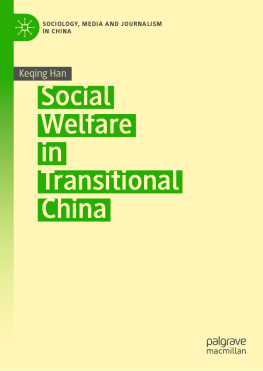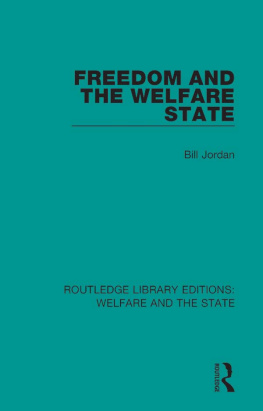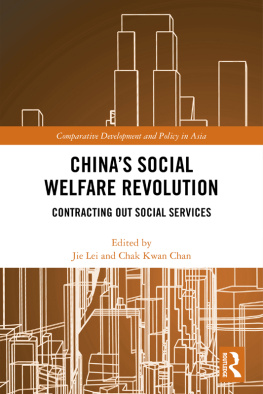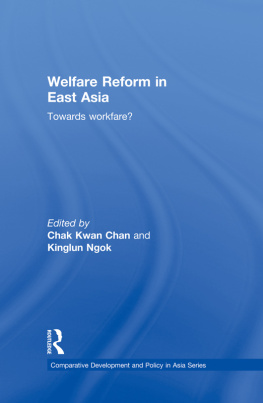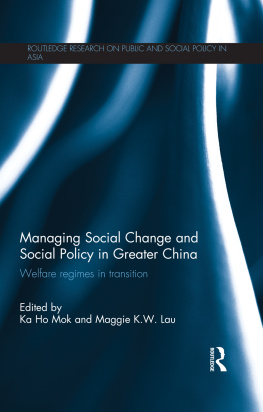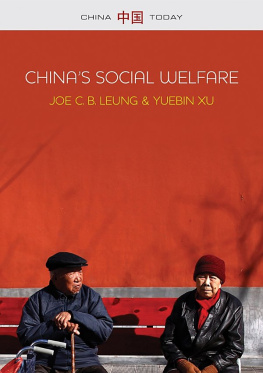Keqing Han - Social Welfare in Transitional China
Here you can read online Keqing Han - Social Welfare in Transitional China full text of the book (entire story) in english for free. Download pdf and epub, get meaning, cover and reviews about this ebook. year: 2020, publisher: Palgrave Macmillan, genre: Politics. Description of the work, (preface) as well as reviews are available. Best literature library LitArk.com created for fans of good reading and offers a wide selection of genres:
Romance novel
Science fiction
Adventure
Detective
Science
History
Home and family
Prose
Art
Politics
Computer
Non-fiction
Religion
Business
Children
Humor
Choose a favorite category and find really read worthwhile books. Enjoy immersion in the world of imagination, feel the emotions of the characters or learn something new for yourself, make an fascinating discovery.
- Book:Social Welfare in Transitional China
- Author:
- Publisher:Palgrave Macmillan
- Genre:
- Year:2020
- Rating:5 / 5
- Favourites:Add to favourites
- Your mark:
- 100
- 1
- 2
- 3
- 4
- 5
Social Welfare in Transitional China: summary, description and annotation
We offer to read an annotation, description, summary or preface (depends on what the author of the book "Social Welfare in Transitional China" wrote himself). If you haven't found the necessary information about the book — write in the comments, we will try to find it.
Social Welfare in Transitional China — read online for free the complete book (whole text) full work
Below is the text of the book, divided by pages. System saving the place of the last page read, allows you to conveniently read the book "Social Welfare in Transitional China" online for free, without having to search again every time where you left off. Put a bookmark, and you can go to the page where you finished reading at any time.
Font size:
Interval:
Bookmark:

This series provides an interdisciplinary and cutting edge approach to the key areas of media, journalism and communication in China. Offering titles cutting across these areas, Sociology, Journalism and Communication in China addresses the rapid changes affecting how news is disseminated in China, how people communicate in daily life, and how mobile technologies are affecting contemporary human interaction in sociological and commercial settings. This series also examines major sociological trends in China and how these are developing, as well as rapid changes in how communication is affecting and being affected by Chinas growing population and internal migration. Providing a vital comparative approach, notably with western nations, this series considers the development of Chinese media, journalistic cultures and histories and sociological development on a global scale.
More information about this series at http://www.palgrave.com/gp/series/16016


Jointly published with China Renmin University Press, Beijing, China
The print edition is not for sale in China Mainland. Customers from China Mainland please order the print book from: China Renmin University Press.
ISBN of the China Mainland edition: 978-730-01-3661-5
Translation from the Chinese language edition:
by Keqing Han,
China Renmin University Press 2011.
All Rights Reserved.
Funded by (Chinese Fund for the Humanities and Social Sciences)
Cover design by eStudio Calamar
This Palgrave Macmillan imprint is published by the registered company Springer Nature Singapore Pte Ltd.
The registered company address is: 152 Beach Road, #21-01/04 Gateway East, Singapore 189721, Singapore
This book is dedicated to my mother
Font size:
Interval:
Bookmark:
Similar books «Social Welfare in Transitional China»
Look at similar books to Social Welfare in Transitional China. We have selected literature similar in name and meaning in the hope of providing readers with more options to find new, interesting, not yet read works.
Discussion, reviews of the book Social Welfare in Transitional China and just readers' own opinions. Leave your comments, write what you think about the work, its meaning or the main characters. Specify what exactly you liked and what you didn't like, and why you think so.

